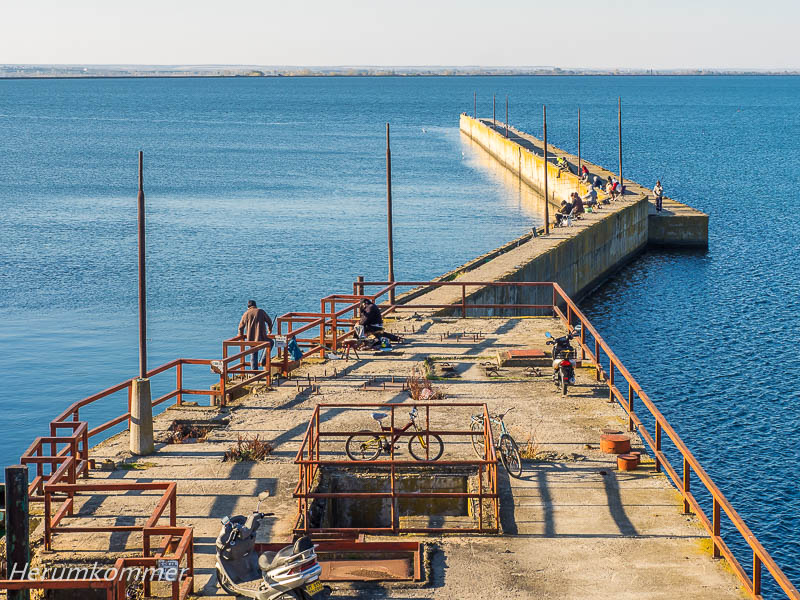
Der Olt (deutsch: Alt) fließt von den Ostkarpaten zunächst westwärts, später südwärts und mündet nach 670 km in die Donau. Für die Region Oltenia (Kleine Walachei), zwischen Südkarpaten, Donau und Olt, ist er Namensgeber. In seinem Lauf ist er schätzungsweise etwa auf der Hälfte seiner Länge immer wieder aufgestaut. Insbesondere auf seinen südlichen rund 150 km folgt ein Stausee auf den anderen, wie eine Kaskade von Seen. Das Wasser des südlichsten Sees wird offenbar auch zur Bewässerung genutzt; in dieser Gegend steht westlich des Olt ein Gewächshaus neben dem anderen und an den Straßen werden diverse Gemüse in Großmarkt-Mengen verkauft.
Die Staumauern und die Kraftwerke sind wohl in ordentlichem Zustand. Mauern und Ufer sind beliebte Angelplätze, da stören auch keine Verbotsschilder. Zufahrten und ehemalige, außer Betrieb genommene wassertechnische Bauwerke sind teilweise dem Verfall preisgegeben. Auf einer dieser Schlaglochpisten kommt uns ein Gesamtkunstwerk mit Höllenlärm entgegen geschlichen: Ein vom Rost zusammen gehaltenes Fahrzeug, vermutlich aus verschiedensten Fahrzeugen und sonstigen Teilen zusammen gebaut; das Fahrzeug in Basteltechnik als Mähmaschine „aufgerüstet“; ein alter Zausel als Fahrer, der das nach Diesel stinkende Ding vermutlich seit seiner Jugend fährt.
At the Olt The Olt (German: Alt) flows from the Eastern Carpathians first westwards, later southwards and flows into the Danube after 670 km. It gives its name to the region of Oltenia (Little Wallachia), between the Southern Carpathians, the Danube and the Olt. In its course, it is an estimated half of its length repeatedly dammed. Particularly on its southern 150 km, one reservoir follows the other, like a cascade of lakes. The water of the southernmost lake is apparently also used for irrigation; in this area, west of the Olt, one greenhouse stands next to the other and various vegetables are sold in wholesale quantities along the roads. The dam walls and the power stations are probably in decent condition. Walls and banks are popular fishing spots and no prohibition signs get in the way. Some of the access roads and former water engineering structures that have been decommissioned have fallen into disrepair. On one of these potholed roads, a total artwork comes creeping towards us with a hellish noise: A vehicle held together by rust, presumably built from a wide variety of vehicles and other parts; the vehicle „upgraded“ as a mowing machine using tinkering techniques; an old rascal as the driver, who has presumably been driving the diesel-smelling thing since his youth.








In ehemaligen Schleusen sind die Schleusentore durch Betonmauern ersetzt worden. Bereiche unterhalb dieser aufgegebenen Anlagenteile hat sich die Natur zurück geholt. So sind einige schöne Wasserlandschaften entstanden.
In former locks, the lock gates have been replaced by concrete walls. Nature has reclaimed the areas below these abandoned parts. This has created some beautiful water landscapes.














